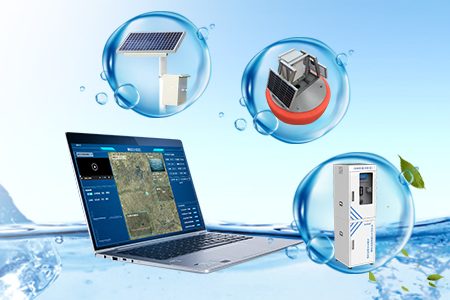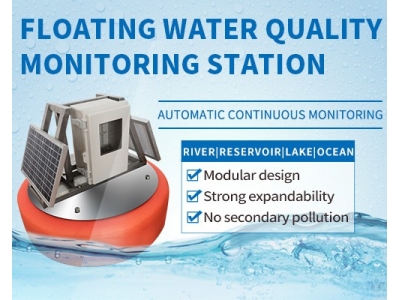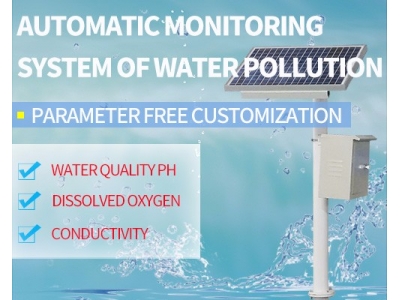What is water quality monitoring?
Have you ever stopped to think about how we get information about the condition of our nation's streams, lakes, estuaries and coastal waters? Are the waters safe enough for swimming, fishing, or drinking? Water quality monitoring provides this basic information.
There are many ways to monitor water conditions. Monitoring specialists sample the chemical condition of water, sediments, and fish tissue to determine levels of key constituents such as dissolved oxygen, nutrients, metals, oils, and pesticides. They also monitor physical conditions such as temperature, flow, sediments, and the erosion potential of stream banks and lake shores. Biological measurements of the abundance and variety of aquatic plant and animal life and the ability of test organisms to survive in sample water are also widely used to monitor water conditions.
Monitoring can be conducted at regular sites ("fixed water quality monitoring stations") on a continuous basis; at selected sites on an as-needed basis, to answer specific questions, or to characterize a watershed; on a temporary or seasonal basis (for example, during the summer at bathing beaches); at random sites throughout an area or state; or on an emergency basis (such as after a spill). Increasingly, monitoring efforts are aimed at determining the condition of entire watersheds -- the area drained by rivers, lakes, and estuaries. This is because we have come to realize the impact of land-based activities on the waters that drain the land, and the interconnectedness of all types of waterbodies, including those beneath the ground.

Why monitor?
Monitoring can be conducted for many purposes. Five major purposes are to:
characterize waters and identify changes or trends in water quality over time;
identify specific existing or emerging water quality problems;
gather information to design specific pollution prevention or remediation programs;
determine whether program goals -- such as compliance with pollution regulations or implementation of effective pollution control actions -- are being met; and
respond to emergencies, such as spills and floods.
Some types of monitoring activities meet several of these purposes at once; others are specifically designed for one reason.
What happens to monitoring data?
Data collected by state, local and federal agencies and private entities are needed to build the assessments we need to make better pollution control decisions. Without data, we simply cannot know where pollution problems exist, where we need to focus our pollution control energies, or where we've made progress.
Many agencies and organizations maintain computerized data systems to store and manage the water quality data they or others collect. One of the largest such ambient water quality monitoring system is EPA´s STORET (for STOrage and RETrieval) system. Data collected by state, local and federal agencies and some private entities such as universities and volunteer monitors are entered into STORET. Raw data in STORET can be accessed, analyzed, and summarized by many users and for many purposes.

STORET is evolving to keep pace with developing technologies; in the near future, it will become easier to use and more responsive to user capabilities and needs. The next generation of STORET, known as WQX (for Water Quality eXchange), will provide much more flexibility to users while retaining standard data elements that provide consistency and quality control.
States and tribes turn their data into information about whether their waters meet water quality standards. States report his information to EPA every two years under Section 305(b) of the Clean Water Act. EPA, in turn, summarizes these state water quality assessment reports into a national Report to Congress called the National Water Quality Inventory. This report now includes a database of state-by-state assessment information that can be viewed down to the waterbody level. Visit our Section 305(b) website for the latest available information reported by the states on the quality of their assessed waters.
The Future of Water Quality Monitoring
This brief introduction has provided a glimpse into the complex world of water quality monitoring. Efforts are currently underway to improve how monitoring is conducted, how information is shared, and how decisions based on monitoring are made.
In response to EPA guidance, states have prepared comprehensive, long-term monitoring strategies that address all water types, including those such as wetlands for which little data currently exist. These strategies will help identify needed actions and overall challenges facing states as they work to improve monitoring over the coming decade.

The states and EPA are taking steps toward streamlining and improving water quality monitoring and assessment by integrating monitoring and r eporting requirements under Sections 305(b) and 303(d) of the Clean Water Act. (Under Section 303(d), states, territories, and authorized tribes are required to develop lists of impaired waters.) EPA is also working toward improving electronic reporting of monitoring data to make it increasingly accessible to the public and to decision-makers at all levels of government.
National and state-level statistical surveys - designed using modern survey techniques in which random sites are sampled to reflect all waters that have similar ecological characteristics -- are providing a new, scientifically-valid baseline of information to help us evaluate the success of our national efforts to protect and restore water quality. These surveys also provide funding and expertise that will enhance each state´s ability to monitor and assess the quality of its waters in the future.








